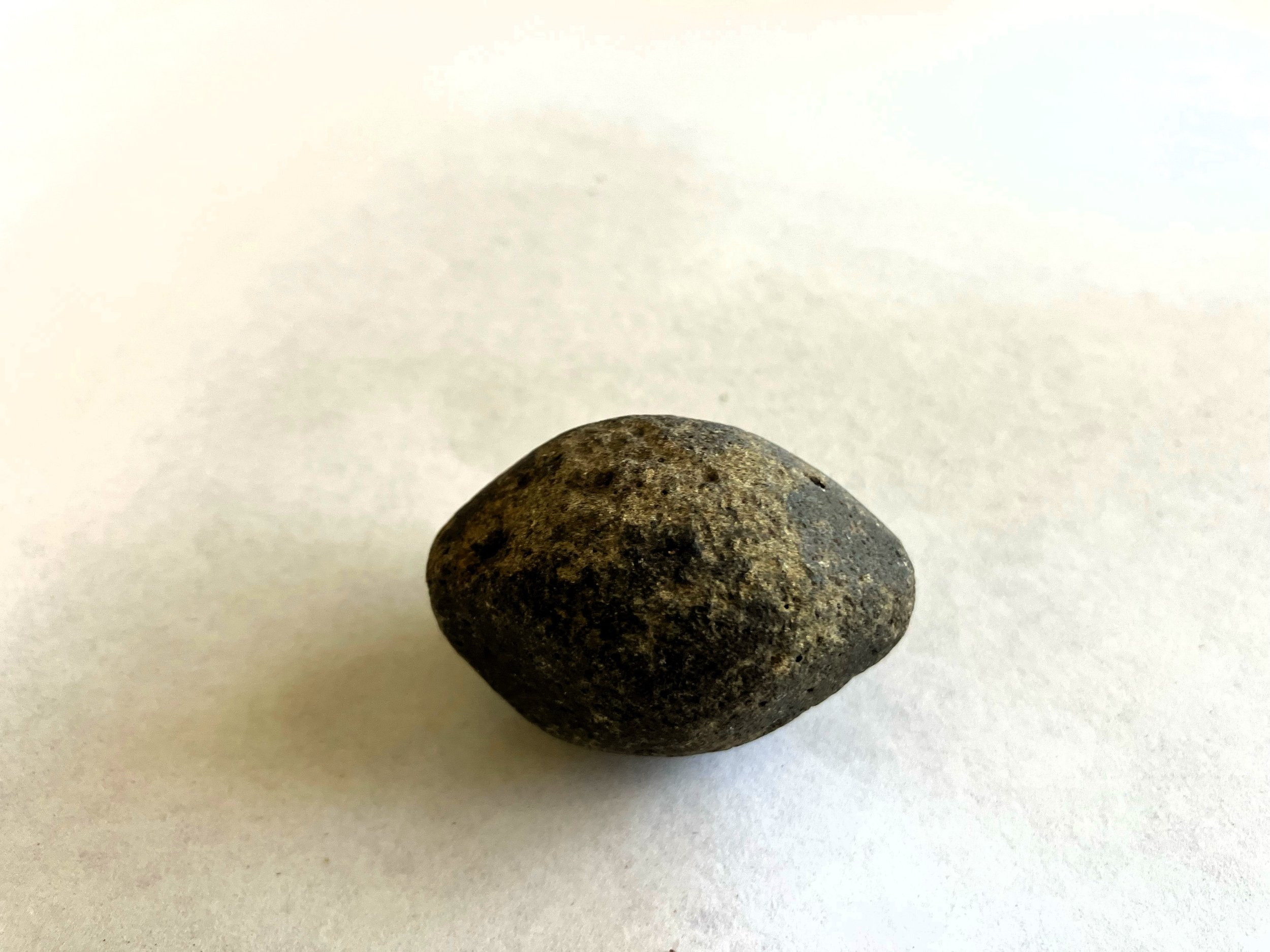Ka Moʻolelo o Ke Kaua o Kalaeʻiliʻili: The Story of the Battle of Kalaeʻiliʻili
For over two centuries between the fight between the children of Chief Piʻilani and the middle of the 18th century, Waiheʻe appears to have been relatively quiet, and the stories of those years are remembered only by the kamaʻāina of the land of the kamakani kili ʻoʻopu. We know that the fertility of the ʻāina, and the abundant water of Waiheʻe witnessed a growing population, as seen by the expansion of the system of loʻi kalo from Mauna Alani and Kalepa stream deep into Waiheʻe valley. During this time, the entire district of Wailuku, the Nā Wai ʻEha or the four rivers of Maui, grew into what later generations would understand as the most productive loʻi kalo lands in the entire archipelago. This ʻāina mōmona did not go unnoticed by the chiefs who sought to expand their own land holdings.
According to one kūpuna, the next chief who spent many of his days in Waiheʻe was the high chief of Maui, Kamehamehanui (not to be confused with Kamehameha the Great, who later became mōʻī, or king of Hawaiʻi), who ruled Maui for twenty-nine years. Although we are not sure how much time Kamehamehanui spent in Waiheʻe, undoubtedly, it was the abundance of the land that attracted him and his entire chiefly entourage to this wahi pana.
During the reign of Kamehamehanui, a high ranking chief originally from Hawaiʻi Island arrived on Maui, Keʻeaumoku Pāpaiahiahi. Keʻeaumoku, the son of Keawepoepoe and Kumaʻaikū, two very high ranking chiefs from Hawaiʻi Island, arrived on Maui in the early 1760s with his mother after this young chief led a rebellion against Kalaniopuʻu, the high chief of Hawaiʻi Island. When Kamehamehanui passed away around 1766, Keʻeaumoku married his widow, Nāmāhana, an act that was understood by Kahekili, the new high chief of Maui, as a form of rebellion. Understandably, this marriage deeply angered Kahekili who, by tradition, should have married his brother’s widow.
For some time Nāmāhana and Keʻeaumoku lived in Kapoho village, aware of all that was happening across the island, but likely not involved with the island’s day to day governance. Nāmāhana had inherited Waiheʻe from her mother, Haʻaloʻu, and from what we can tell, in those early days of their marriage, Keʻeaumoku and Nāmāhana enjoyed the bounty that Waiheʻe offered. In addition to the kalo it produced, Waiheʻe was also known as a place with abundant fish and heʻe (octopus). At some point, a dispute arose between Keʻeaumoku and a lower ranking warrior-chief who lived at Kaʻapoko in Waiheʻe Valley named Kamahana (sometimes written as Kahahana). This dispute seems to have had its origin in the fair distribution of fish, as well as access to the best fishing grounds of Waiheʻe. Soon after, Kamahana shared his anger and frustration with others, gathering around him a number of discontented lesser chiefs and warriors.
Kamahana’s anger quickly boiled over and he decided that an uprising against Keʻeaumoku was the only way to permanently overcome this injustice. From the accounts of Samuel Kamakau and others, the battle began with Kamahana ceremonially putting on his ʻahu (feather cloak) and mahiole (helmet), gathering the warriors loyal to him, and marching on Niukukahi in Waiehu. Once there, Namahana and his warriors killed three men loyal to Keʻeaumoku before marching to Waihe’e to exact their revenge on this interloper from Hawaiʻi Island. Kamahanaʻs arrival at Waiheʻe marked the beginning of Ke Kaua o Kalaeʻiliʻili, The Battle of Kalaeʻiliʻili; a relatively minor battle with significant implications for the future of Hawaiʻi. Today, Kalaeʻiliʻili is a prominent point along the Waiheʻe coast directly in front of Kapoho village at what I often think of as the piko of Waiheʻe Refuge.
Before going any further an explanation of the style of combat at that time is in order. Descriptions of battle formations typically fall into two different classes, the kahului type battle formation in which the warriors formed a crescent-shaped arc, or phalanx, and the makawalu battle formation in which the warriors engaged one another as squads of warriors. Typically the kahului, or phalanx, was used on wide-open ground in which the opposing sides could face one another. As each side faced the other, long spears, or pololū, often measuring 9-12 feet long, were used to break up the front line, while fast runners would throw tripping stones, or pīkoi, attached to ropes, designed to entangle or smash legs and shins. Added to the chaos of facing an opposing phalanx in the kahului, Maui warriors in particular were experts in the use of slings (maʻa) and slingstones (pōhaku maʻa) and incredible stories are recorded of warriors accurately hitting targets at substantial distances. In fact, during the early years of whaling, Maui warriors were known to scoff at European muskets, offering to set up challenges with the sailors to prove to them the efficacy of their pōhaku maʻa, and invariably humiliating the sailors in the process. Considering the deadly nature of combat at this time, the use of mahiole, made of protective ʻieʻie vines, and thick, robust ʻahu became increasingly common as a means of providing some measure of protection from the bullet-like pōhaku maʻa and spears.
The makawalu formation was most often used in areas with rugged terrain or where the kahului would be disrupted by trees or shrubs. The makawalu, by its very nature, was meant to allow swift movement across rugged terrain, where opposing squads would engage each other in close (i.e hand to hand) combat. In such instances the ihe (short spear, usually 4-6 feet long) was used in place of the longer pololū, and weapons such as the pīkoi was likely used far more judiciously in place of weapons such as the pāhoa (dagger) and lei niho manō (shark-toothed dagger). Although the descriptions are sparse, the battle of Kalaeʻiliʻili seems to have been fought in the makawalu battle formation.
As Kamahana approached Kapoho village and Kalaeʻiliʻili, the battle erupted. According to the accounts, the battle raged over the entire length of the day that evening and into the next day with losses occurring on both sides. However, neither side could get the advantage over the other and the battle, at least for a time, seemed to come to a stalemate.
At some point in the battle, perhaps in the night when a kūkini (runner) could slip away without being seen, word was brought to Mauiʻs ruling chief, Kahekili. With this news, Keʻeaumokuʻs fortunes changed in an instant, as the grudge that Kahekili nursed over the marriage of his brother’s wife reared itself. Kahekili quickly assembled his warriors to begin the march to Waiheʻe and provide support to Kamahana against Keʻeaumoku.
With any possible advantage he may have once held gone, Keʻeaumoku let his warriors know of this dramatic change in fortune, at which time they fled, some to Kaʻanapali over the trail that joins Waiheʻe with Kaʻanapali (a portion of which is known today as the Waiheʻe Ridge Trail), while others fled by canoe. Keʻeaumoku and his warriors made their way to Molokaʻi, across the Pailolo channel, pursued by Kahekili who had committed himself to ending this feud with Keʻeaumoku. Eventually, Kahekili landed on Molokaʻi, where another battle erupted, this one known as Kalauonākukui. Defeated once again, Keʻeaumoku fled to Hāna where he found some measure of protection at that time under the rule of Kalaniopuʻu, high chief of Hawaiʻi Island, an especially ironic turn of fate, considering that he originally fled Hawaiʻi Island after rebelling against Kalaniopuʻu. The army of Hawaiʻi Island had recently conquered both Hāna and Kīpahulu, pulling both of these moku (districts) into the political sphere of Hawaiʻi Island. It was in Hāna, at Puʻu Kauiki in March of 1768, Namahana gave birth to her and Keʻeaumokuʻs daughter, Kaʻahumanu, one of the highest ranking aliʻi in all of Hawaiʻi (an aliʻi of the pio rank), and destined to become both husband of Kamehameha and eventually Kuhina Nui (Regent) of Hawaiʻi in 1820.
Several years later, after Kalaniopuʻu had died and the political future of Hawaiʻi Island hung in the balance between the four high chiefs there, Keʻeaumoku returned to his home island. Keʻeaumoku soon became one of the first high chiefs to come to understand the wisdom and ambition of Kamehameha, then the high chief of Kohala. Keʻeaumoku recognized that Kamehameha would one day rise to prominence and offered him his loyalty, an arrangement that would later result in his daughter Kaʻahumanuʻs marriage to the future of Mōʻī of Hawaiʻi.
The battle of Kalaeʻiliʻili was a brief and relatively minor incident in the arc of Hawaiian history. The implications of the battle, however, are profound. By forcing Keʻeaumoku and Namahana to flee Maui and eventually make their way to Hawaiʻi Island, Keʻeaumoku and, later, Kaʻahumanu came into the sphere of the chief who would have the most profound impact on Hawaiian history, Kamehameha. As one of his most trusted and talented aliʻi, Keʻeaumoku played a critical role in the unification of Hawaiʻi. As the mother and father of Kaʻahumanu, Keʻeaumoku and Namahanaʻs departure from Waiheʻe and arrival on Hawaiʻi Island permanently changed the political fortunes of Hawaiʻi.
Keʻeaumoku never forgot about Kamahanaʻs uprising, and apparently fostered some bitterness over his humiliating, abrupt and unplanned departure from Waiheʻe. For nearly a quarter of a century Keʻeaumoku nurtured this grudge until he saw his opportunity after the terrible defeat of the Maui army at the battle of Kepaniwai in ʻIao Valley in 1790. Seeking revenge, Keeaumoku gathered his warriors to massacre the residents of Waiheʻe and put an end to his humiliation. Kamehameha learned of Keʻeaumokuʻs plans and counseled him against such actions. Keʻeaumoku relented, and to this day Waiheʻe is remembered as a place of abundance and peace, instead of the site of a terrible crime.
A pōhaku maʻa found at Waiheʻe Refuge.
Many people find Waiheʻe an easy place to connect with the past and I am no exception. Several years ago, one of the leading activists who fought to stop the planned golf course from being built at what is now the Waiheʻe Refuge showed me what he had found during this struggle. As he opened his hand I saw the pōhaku maʻa in the photograph here. When I asked him where he found it, he said he found it at Kalaeʻiliʻili. Of course, we will never know if this particular pōhaku maʻa was thrown during that battle, but in my mind it is a tangible connection to the times of Keʻeaumoku, Namahana, Kamahana, a ka poʻe kāhiko a pau (and all of the people of old).
— Dr. Scott Fisher

